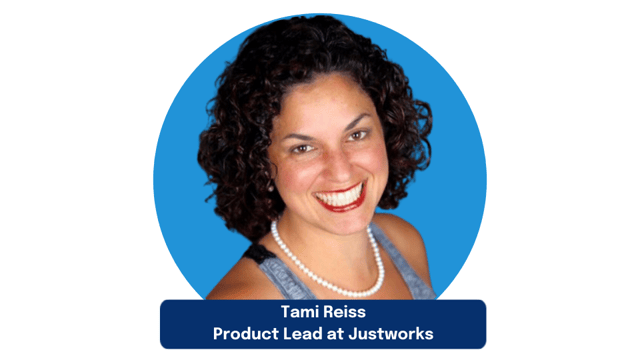Consulting is Product Management

Tami Reiss, Product Lead at Justworks and former Product Consultant, shares how she gets clients to buy in to her strategies, the pros and cons of consulting as a career path, and the best ways to get new clients.
Consulting is an attractive career path for many product leaders. You can earn large fees and help companies solve important problems. Consulting and development agency work can even grow into a large and profitable business like it has for companies such as Pivotal Labs and McKinsey.
But what are the downsides of consulting? And what do consultants need to do in order to be successful?
Tami Reiss has worked as a Senior Consultant at Pivotal Labs and as an independent consultant. She’s worked with over 50 companies, including JP Morgan and Humana. In this episode, I ask her about everything from how to debate with clients to how to get new clients.
I started by asking Tami about the various types of consulting engagements and why companies hire consultants as opposed to full-time employees. Consultants can help companies with ideation, user research, strategies for exploring a new market, project management, or internal processes. Tami says that she strives to meet the needs of her clients:
What's interesting about product consulting is that similar to when you're developing a product and you're looking for product market fit, when the market is an individual business, the product, which is your consulting, is going to adapt."
Tami describes how consultants provide companies with a safer way to test new concepts. Often times executives at large companies are faced with excessive bureaucracy or reputation risk that prevents them from taking risks. Consultants and agencies are willing and able to bear the risk and do the hard work of putting new ideas in front of customers and creating a great user experience in the face of business and legal requirements.
Tami shares how she tells clients when their ideas are bad and how she educates them about her recommended methodologies and strategies, including a great story about how she got into a heated debate with a client in the middle of their office. She stresses the importance of understanding the client's priorities and building trust:
As a consultant, your job is to have someone trust you. It's their baby. It's their name that's on the line for this project. If you fail, they're the one that has to talk to their executives as to why it failed. You still get paid as a consultant, and they know that. So, help build that trust as a consultant, where the team you're working with knows that you're invested as much as you can be, as a consultant, in their success, and that you have a shared success trajectory"
One of the most challenging aspects of consulting is getting new clients. Tami tells a story about how she asked someone in her network for a referral and landed the client, shares how she positions her LinkedIn profile to attract new opportunities, and says that extensions with existing clients should not be overlooked:
Something I didn't realize when I was first starting out as a consultant, especially when I was running a consultancy, is how many clients say they only have six weeks of budget, and then at the end of six weeks, need to extend. The consulting engagement extension is a real thing. It is more probable than you think it is, and the opportunity is there."
You’ll learn a lot from this interview about starting a consulting practice and building trust with clients. Here are the highlights:
- Tami describes the various services consultants can provide to clients (6:30)
- Tami explains why companies hire consultants, as opposed to full-time employees (8:50)
- How Tami aligns a client’s business needs with the needs of their users (12:20)
- How Tami handles disagreements over methodology or strategy (15:00)
- Tami’s best advice for finding new clients (20:20)
- Tami’s thoughts on the viability of consulting as a career for product managers (25:00)

Subscribe now!
Get our new reports, case studies, podcasts, articles and events

.png?width=80&name=Untitled%20design%20(1).png)